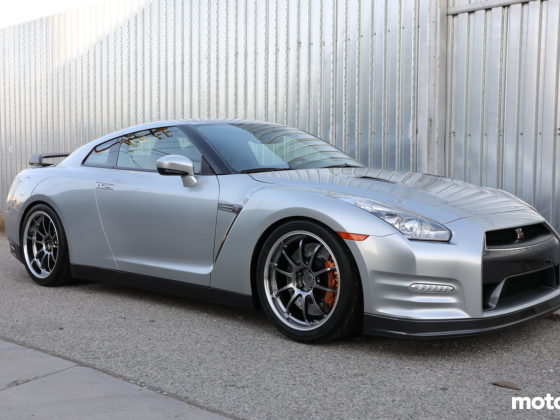This article won’t teach you anything about alignments except the basics. The bare bones. Read and study Nikita’s to really understand the concept. Do a Google search and find a course on alignments and take that. Whatever you do, do not view this article as an instructional tool on alignments. It’s a story about some guys who are making DIY alignments work for them.

The first step towards any project is always the obstacle. After chatting about it for a few weeks and the four of us agreeing that we could work together on this, we still weren’t any where with regards to a commitment. It was just talk. Then it happened. After visiting Summit Racing’s website for the umpteenth time, we bought the Longacre Digital Caster Camber gauge for 13″ to 24″ wheels. At $330 USD it isn’t really cheap, but you hook it up and press the on button and it does virtually everything else. There are others that are lower priced but we liked the features and size range that this unit offered. Wow, it is nice to press a button and have the camber info and a second button for caster. The bottom line is that if you love doing math, then Nikita’s method will save you at least $300 USD. The advantage of this Longacre Digital Caster Camber Guage is that my head doesn’t hurt when I’m attempting to set up an alignment (math was never my strong point), so it is my preference. But this should be a warning as it sets the stage for the rest of the article – even though it is a basic setup we still spent some money. Around $800 USD / $1200 Canadian dollars for the setup that we now have. It consists of the already mentioned Longacre gauge, an AnsixAuto string alignment kit (prototype when we purchased it; now in production), a used Longacre weigh scale, and a few odds and ends that enable this to work. And work it does, as Jeremy went out after using the DIY equipment on his car and set both a personal best and a class track record at our local track. I’ve just finished my alignment – if we had gone to a shop the two of us would have already spent as much or more to a shop for that one time alignment and corner balance. Plus we can check, adjust, and continue without any additional outlay of dollars. At the track I squeaked out a personal best while not really trying.

When I talked with Scott at Can-Alignment, my go-to shop back east, he mentioned the challenges of a DIY alignment. Apart from the lack of knowledge and experience that a DIY’r has to deal with, precise equipment and facilities (whether inside or out) are important. Further, you cannot just buy a camber gauge and consider yourself in business – that is simply not going to work. Scott didn’t discourage us as he understands the challenge of finding the right shop – he just wanted to make sure that we were going into this with our eyes open. The bottom line is, that like me you have probably been at a race track and seen some exotic hardware getting setup trackside with string. If it can be done trackside in a paddock, then it can be done in a home garage. You require a level spot for your car. Your garage floor is likely not perfectly level as contractors usually focus upon being close; without any thought to a future home owner wanting to align their track car in the garage. For this a decent level that is 32″ or longer will help you out. If you don’t have one, this is another item to purchase. This level combined with a straight edge as long as your car (we used a straight 2×4) will enable you to check the level of your floor. If it is off, don’t worry. Use some shims like 1/8″ thick and 1′ square pieces of panelling/plywood to level things up. (Wondering why I’m not using metric measurements here; because the lumber/construction industry in Canada is so dominated by US suppliers that metric products simply don’t work in the construction industry). With shims anyone can cause any uneven surface to become an even and level playing field. This could be done in any garage that gives you enough elbow room to move around the car. I have a double car garage so my wife’s CX-3 was moved out and the NX was parked right in the middle. I have always wanted a hoist. After this alignment I really want a hoist. All that I have is one good aluminum floor jack and one cheap jack. Two or even better, four, floor jacks would be nice. See how the costs start increasing here. I made do with my single aluminum floor jack. And I really want a hoist! Please don’t talk to me about Erik’s laser levelling system – I’m already green with envy.

With the four of us searching, that helped locate the items we wanted. When Jeremy found used Longacre scales he just bought them. He knew we’d be in on it! If he had asked us and waited for feedback, we would have lost them.

It’s a known fact that most amateur racers work on their cars during the middle of the night. So have good lights. And when you’re adjusting your coilovers, make sure you record the number of turns that you’re adjusting. That makes it so much easier to fine tune. For example, if five full turns up was too much, then let’s go down two full turns. Versus I went up a bunch so now I’ll come down a bit.




6 comments
Great write-up. As always Mr. Ewald, your articles are informative and entertaining. I do have a question regarding the digital camber/caster tool: Is there a way to zero the measurement? You can zero a scale with nothing on it (or zero it with an empty container on it). How do you ensure that the -3.25 degrees of negative camber as measured by the tool is actually -3.25 degrees?
Banfstc, thank you. I appreciate your kind words.
Great question about the Longacre unit. It is supposed to hold it’s zero, even when shut off. According to AES, running my car on the Mustang dyno was like running one of his drift client cars – it didn’t want to run nicely for him. So I’m pretty sure the -ve camber is there. More details about the Longacre calibration can be found here: http://www.longacreracing.com/instructions.aspx?item=42369&article=AccuLevel%E2%84%A2%20%20Pro%20Model%20Digital%20Level%20(ver.%205)
It also has a calibration procedure if you’re in doubt that zero is zero.
In other words, you have to believe! Another reason to select a good name like Longacre.
Thank you so much for this article. I read Erik’s article when it first came out and dreamed about something like that, but unfortunately, his set up is out of my price range. This on the other hand is right up my alley. Thanks
ERK, exactly. I can only dream about Erik’s setup; but I have this one!